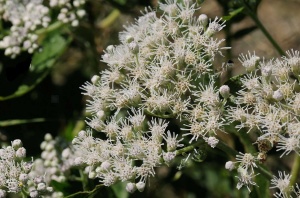
This plant grows for me in sun or shade, in any soil. Grows to be 3′ tall, covered with white flowers in lat summer that the butterflies and pollinators adore. Native plant.

This plant grows for me in sun or shade, in any soil. Grows to be 3′ tall, covered with white flowers in lat summer that the butterflies and pollinators adore. Native plant.
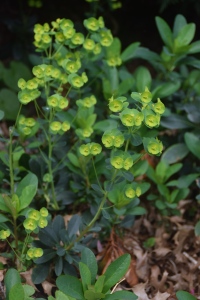 Awesome evergreen groundcover for dry shade. Spreads gently into a mass of beautiful yellow “blooms” (they’re really bracts, not blooms) in spring over lustrous dark foliage. Great for cut flower arrangements. Did I mention she’s green all winter? Completely carefree once established.
Awesome evergreen groundcover for dry shade. Spreads gently into a mass of beautiful yellow “blooms” (they’re really bracts, not blooms) in spring over lustrous dark foliage. Great for cut flower arrangements. Did I mention she’s green all winter? Completely carefree once established.
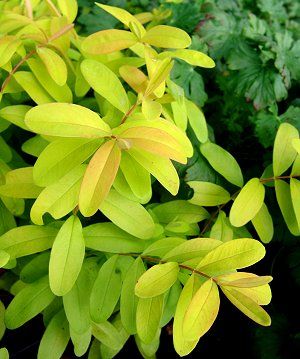
Hypericum ‘Brigadoon’ has golden foliage that brightens a shady spot
This marvelous little plant glows golden. It loves a spot in part sun, and is a great edging plant. The golden color brightens your garden from spring and lasts almost all winter before it ought to be sheered back to the ground to promote new growth. Truly one of my favorite foliage plants in the garden. Part sun, 10″ high, fantastic in cut arrangements.
One of the most colorful bloomers in the late summer garden, bees flock to the spikes of pale purple flowers for one more shot pollen before autumn comes. Spreads at a medium rate into a large mass of color, for a smashing display in your flower bed.
Full to part sun, 24″ tall.
This superstar plant tops out by summer’s end at 5-6′ tall, with prolific clusters of beautiful blue flowers for the back of the border. Just as the summer garden winds down, this beauty gives you a jolt of autumn color. Fantastic planted with other fall bloomers like fountain grasses and goldenrod. Butterflies love her and she makes a great cut flower. Half to full sun for best blooms. Completely drought-proof once established.
This native plant has showy lavender flowers for a long bloom season June through August. Drought-proof plant attracts butterflies and hummingbirds. Full to half sun. Deer resistant. Spent flower stems provide interest in the winter garden.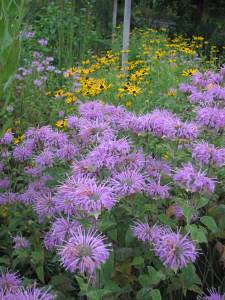
Strawberries are easy to grow in full sun, and don’t require any spraying or special coddling to get fruit. They are great for edging a bed, so the fruit are right where you can reach them.
A few years ago I ordered named cultivars from a very highly reputed grower. Now mine are spreading all over the place and I have many to share.
Cultivars I have are: Cavendish, Chandler, Earliglow, Record, Sparkle, and Mara De Bois.
Hellebores are extremely long-lived perennials that surprise us in late winter and early spring with gorgeous flowers over evergreen leaves. Highly prized and very expensive, they are a gem in any garden. Plant by a well-trafficked walkway so you won’t miss the blooms. Full sun to full shade, they grow anywhere!
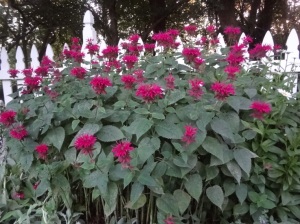
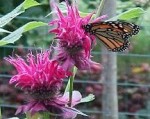 Monarda ‘Raspberry Wine’ blooms prolifically over blue-green foliage in the summer, about 2′ high.
Monarda ‘Raspberry Wine’ blooms prolifically over blue-green foliage in the summer, about 2′ high.
Full to part sun. Extremely drought-tolerant and a butterfly magnet. Spreads rapidly to make large clumps to divide with friends!
Smothered with yellow flowers in the fall, a great companion to New England aster. Spreads rapidly into a big clump. Full sun, completely drought resistant once established. A deer-resistant plant NATIVE to North America.
Goldenrods bloom in autumn and provide vital sources of pollen and nectar for bees and other insects in the late summer and fall throughout North America. Honey bees collect large amounts of nectar from goldenrod prior to winter, and other bees use pollen from goldenrods to provision late-season nests. Plant some in your garden today to give our pollinator friends the boost they need to get through the long winter.
“[Goldenrods] are still wrongly accused of causing hayfever. Therefore, it bears repeating that goldenrods, like aster, Joe-Pye, ironweeds, and all the Composites, are insect-pollinated, so their pollen is heavy and sticky in order to facilitate transfer by our six-legged friends. It is the wind-pollinated plants like grasses, ragweed and many trees (I am allergic to maples for example) that produce the great quantities of light, airborne pollen that get into our noses and throats and cause the immune reaction known as hayfever.”
— William Cullina, The New England Wild Flower Society
Guide to Growing and Propagating Wildflowers, p. 197